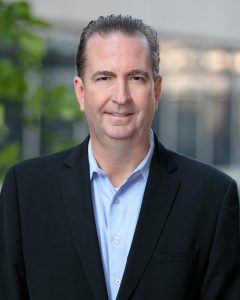A message from CDCR Secretary Jeff Macomber

A few weeks ago, I had the honor of joining Governor Newsom as he unveiled the state’s plan to transform the criminal justice system. Joining us were Secretaries from other state departments, members of the media, and a building full of employees, current and formerly incarcerated people, and partners from California’s criminal justice reform community. We were all there to ring in a new era for corrections in California – the California Model.
(Learn more about plans to transform criminal justice in California.)
Governor Newsom announced a reimagining of thousands of square feet of space at San Quentin State Prison. Long a model of rehabilitation, San Quentin is about to take it to the next level with not only a new name –San Quentin Rehabilitation Center – but a complete overhaul of what we’ve come to think of as state prison. A team of correctional, reentry, and rehabilitation experts is embarking on a first-of-its-kind collaboration to create a space focused on preparing individuals for successful returns to the community.
But our work doesn’t start or end at San Quentin. We are committed to public safety, we are dedicated to serving all citizens of California, and we value the unique differences and experiences of all who live, work, and visit state prisons.
All divisions will work together
I recently convened a California Model Planning & Implementation workgroup. The team comprises experts from every division of CDCR and CCHCS. They are tasked with developing the next steps for the California Model. Their goals – and mine – are not only to reimagine the correctional landscape for the people in our care, but also to make this a better place to work and enhance the overall wellness of our dedicated employees.
This change will not happen overnight, but we have been planting the seeds of progress for some time. Through a groundbreaking partnership with the Amend program at the University of California San Francisco, people in leadership positions throughout CDCR have traveled to Norway to learn how their approach to normalcy in corrections and rehabilitation is lowering recidivism and expanding employee wellness. They’ve taken what they learned and have been using it as inspiration to develop new programs and policies here.
Who we are and what we do
A resource team at Salinas Valley State Prison is dedicated to building a comprehensive support system for incarcerated people. They have built a therapeutic community within the prison’s Psychiatric Inpatient Unit. There, employees and incarcerated people communicate openly and regularly. SVSP employees use “dynamic security” to actively observe and engage with incarcerated people constantly, getting to know their unique needs and developing individualized treatment plans.
The Youth Offender Rehabilitative Community (YORC) is thriving at Valley State Prison. Every day, incarcerated mentors share their wisdom with their younger mentees. All are engaged in intense restorative justice programming as well as productive work assignments, community service projects, and community-building activities. Employees are taking part in the rehabilitation of incarcerated people as well as positive programs and activities designed to enhance staff wellness.
Those are just two examples of the shift in mindset that has been happening throughout CDCR. We are not at the finish line yet, but we are so far from where we were. I know a workgroup will not change the face of corrections by itself – it takes all of us. And so, I am asking for your input. What would you like to see change at CDCR that benefits both staff and incarcerated people? What does success look like to you?
Learning from our partners
The Washington State Department of Corrections asked this question in a powerful video about their partnership with Amend.
While the correctional systems in Washington and Norway are very different from California’s, I know the answers are already here in our innovative employees. The California Model will be staff-built. You are all empowered to share your ideas and contribute to bettering the lives of our employees and those in our care.
Look for a video message similar to Washington’s from the Planning & Implementation workgroup soon. In the meantime, I encourage all employees to be thinking about what the California Model means to them. Share with your divisions what you’d like to see change and why. No ideas are too small or too big. In fact, your ownership of the California Model is the only thing that will make it successful.
The California Model requires a massive change in how prisons operate, how employees interact with both each other and incarcerated people, and how safe and engaged incarcerated people feel in our care. It’s a monumental task, but it’s one that has already started. Let’s find out where we go next together.